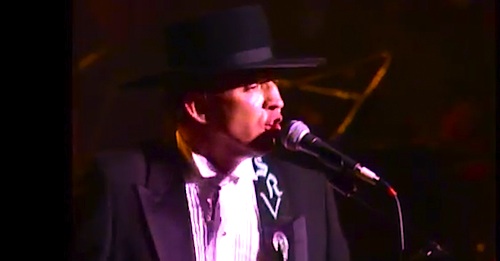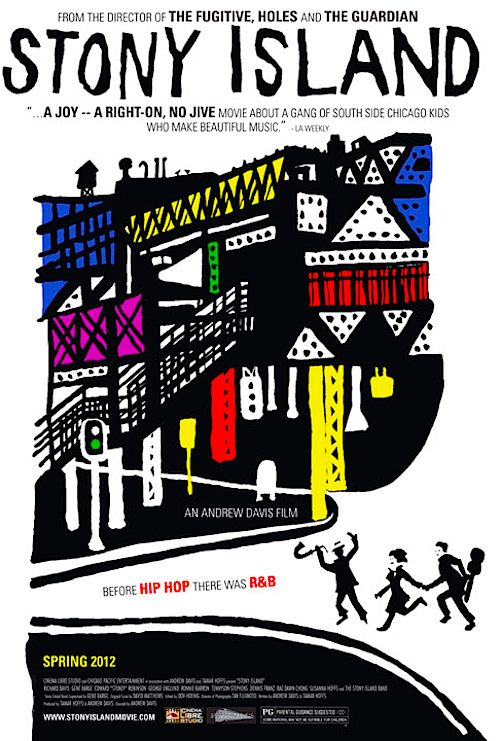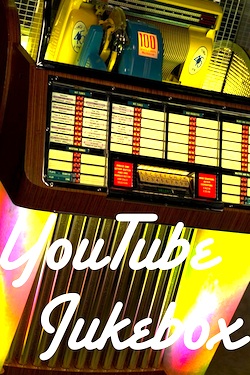By Joe Bendel. It was a Texas kind of night in D.C. A concert bill that featured the likes of Billy Preston, Albert Collins, Stevie Ray Vaughan, and Delbert McClinton certainly reminds us of Texas’s contributions to blues, soul, and R&B. Ostensibly, the show was part of the inaugural festivities of President George H.W. Bush, another Texan, by choice. Of course, inaugurations are really just an excuse to party, which is definitely the vibe of A Celebration of Blue & Soul: the 1989 Inaugural Concert, which airs nationally on participating PBS stations during the March 1-16 pledge drive.
Long feared lost to the ages, the multi-camera recordings of the inauguration night bash have been rediscovered and restored, with a longer DVD release planned for the future. Naturally, Bush campaign manager and former Percy Sledge sideman Lee Atwater served as the honorary chairman of the concert and the invisible hand behind the scenes bringing it all together. After his greeting, the shorter PBS version launches into Dr. John’s “Right Place, Wrong Time,” perhaps the most perfunctory performance of the evening. Next, Atwater’s old boss Sledge gives the crowd what it wants: “When a Man Loves a Woman,” for probably the 500,000th time in his career, but he still does his thing with genuine feeling.
Obviously, the 1989 concert has been edited with an eye towards greatest hits to make it pledge drive friendly, but just about everyone brought their A-game for their signature tunes. Eddie Floyd shows the showmanship of an old pro on “Knock on Wood,” while Sam Moore lays down the authority on “Soul Man,” backed by musical director Billy Preston and Stax veterans Steve Cropper and Donald “Duck” Dunn.
Clearly, there is a lot of real deal blues on the program, including legendary Chess Records mainstay Willie Dixon performing “Hoochie Coochie Man,” which represents the height of blues authenticity. Albert Collins also gets his solo spotlight on “Frosty” (along with his protégé, Vaughan) as does McClinton on “Just a Little Bit.” Most of the artists are backed by the funky ensemble led by Preston and featuring Dunn and Cropper (but alas multi-reed jazzman Patience Higgins is not prominently spotlighted in the PBS cut). Of course, Bo Diddley brought in his own band, because that was how he rolled. He also had Ronnie Wood sit-in on the classic “Bo Diddley Beat” strutter, “Hey, Bo Diddley.”

For understandable reasons, Stevie Ray Vaughan is the only artist allotted more than one number (this is pledge season after all), but he sure could play. He also closes the show with some fittingly nonpartisan, patriotic life-affirming sentiments. It is depressing to think only a year and a half later his own life would be cut short in helicopter crash, while he was still at the absolute peak of his powers. Indeed, the 1989 Inaugural concert captures for posterity many late greats in an appreciative setting, performing the songs that made them famous.
This is a great week for music on PBS. While the 1989 Inaugural Concert does not offer as many surprises as last night’s Jazz and the Philharmonic, it cooks along nicely. The concert itself is a lot of good, clean, soulful fun, but do not be surprised if someone asks you for money at least once during the broadcast. Recommended for fans of blues and Stax-style Memphis soul, A Celebration of Blue & Soul: the 1989 Inaugural Concert aired twice yesterday (3/1) on New York’s Thirteen and can be seen on PBS outlets throughout the country over the next two weeks.
LFM GRADE: B+
Posted on February 2nd, 2014 at 2:51pm.

 Grant me an old man’s frenzy,
Grant me an old man’s frenzy,